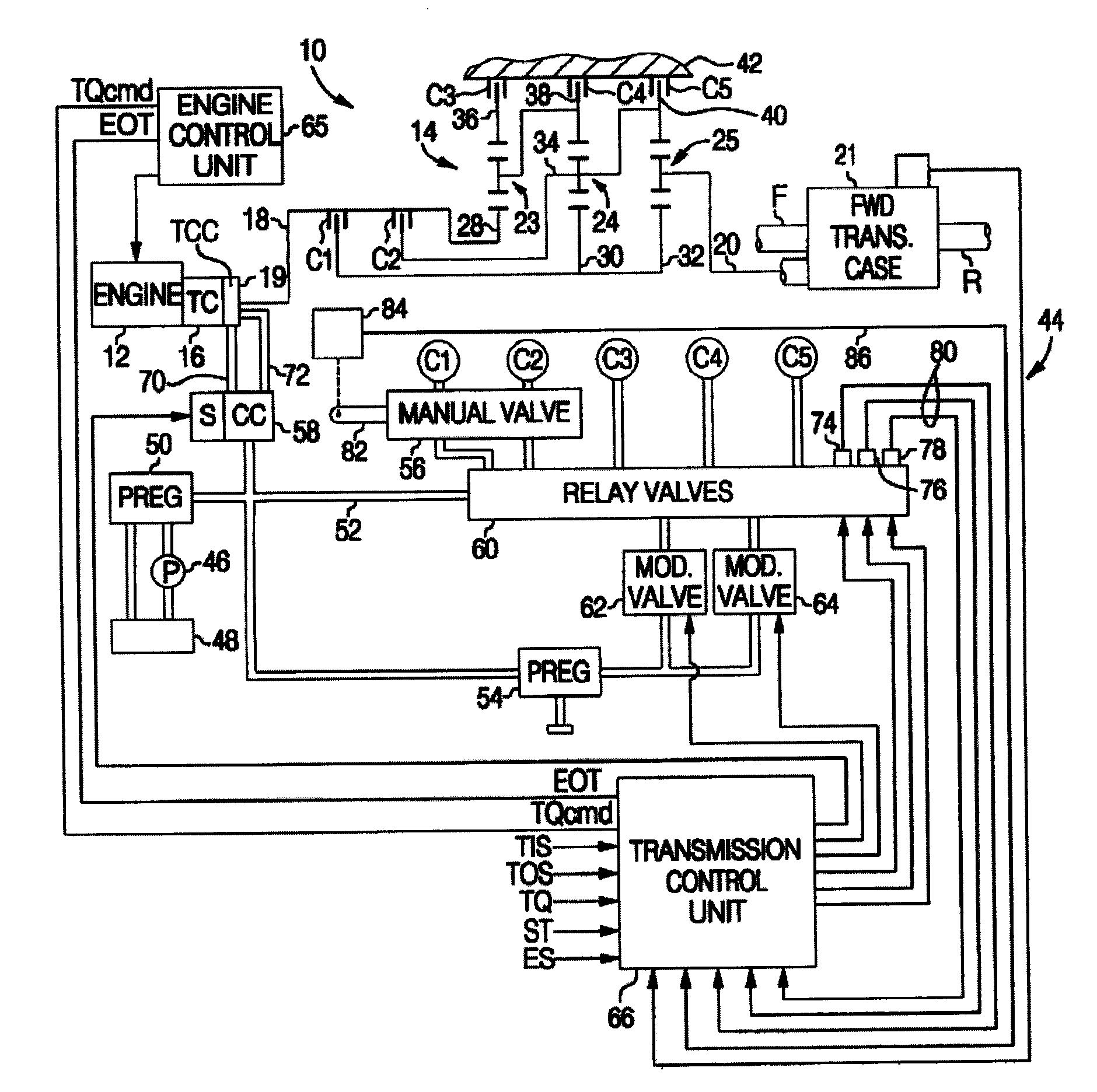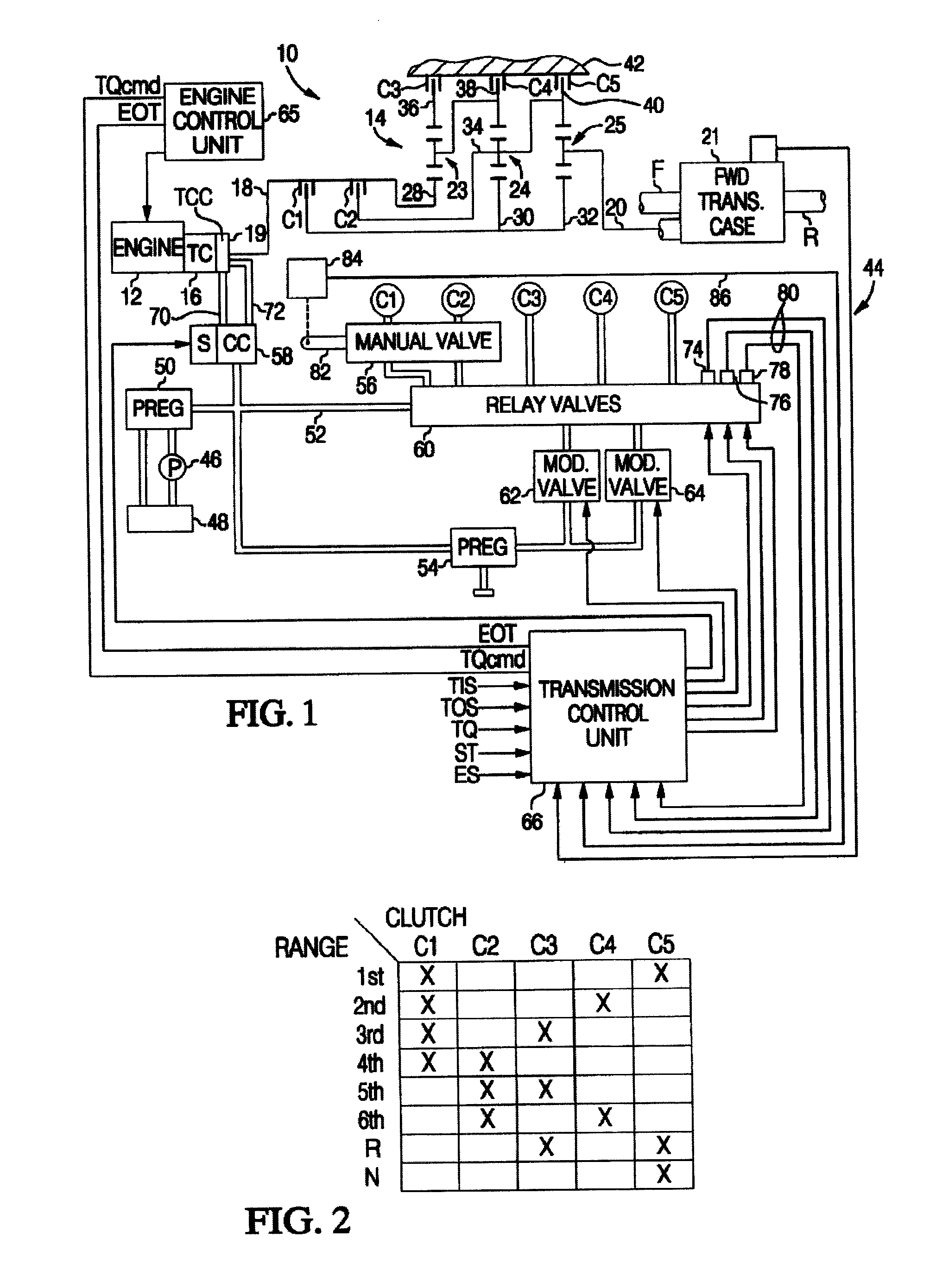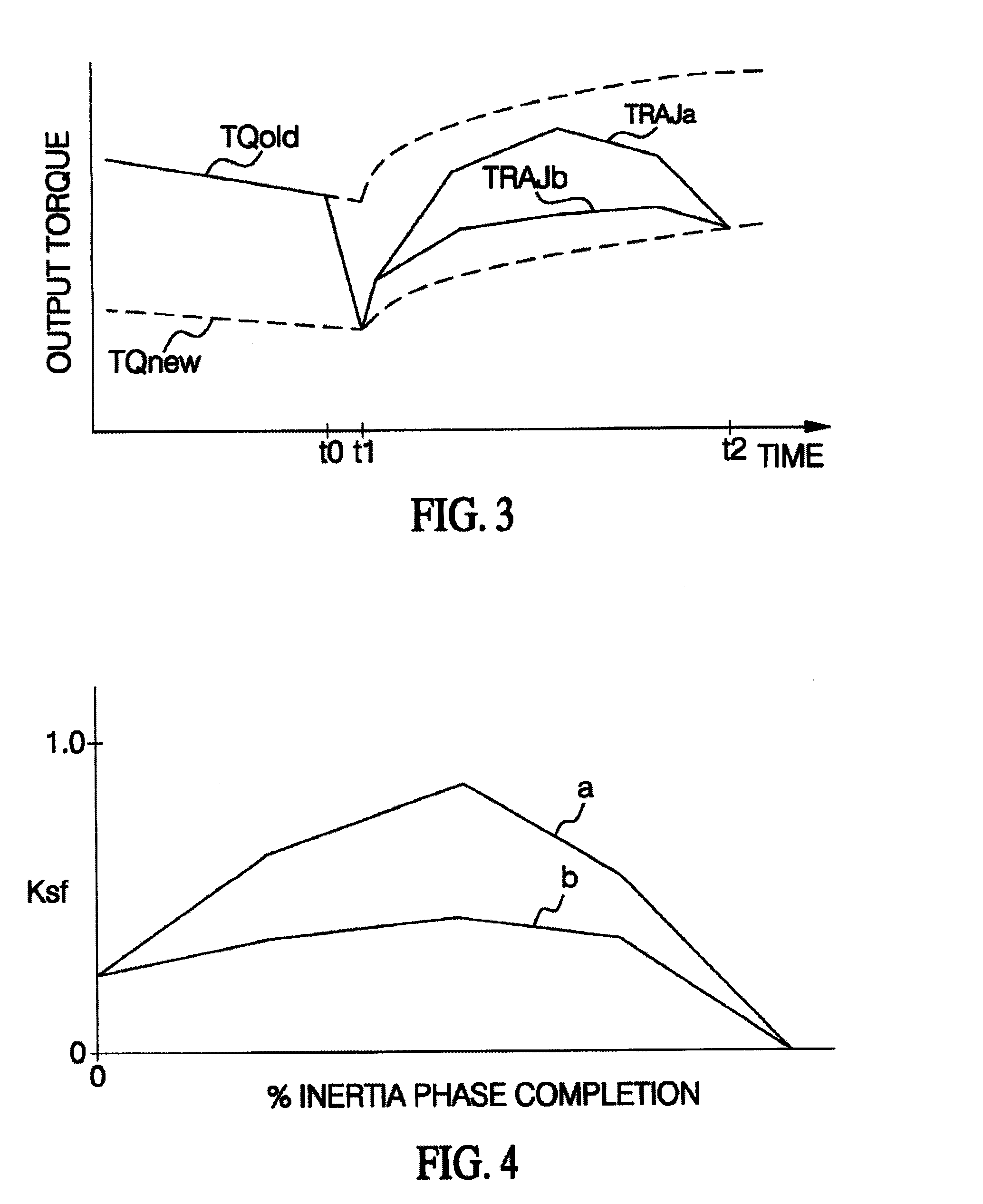Control of engine torque reduction at upshift initiation
a technology of engine torque reduction and upshift initiation, which is applied in the direction of mechanical equipment, digital data processing details, instruments, etc., can solve the problems of poor shift quality, achieve less calibration effort, improve adaptability to different powertrains, and more consistent shift feel and energy dissipation
- Summary
- Abstract
- Description
- Claims
- Application Information
AI Technical Summary
Benefits of technology
Problems solved by technology
Method used
Image
Examples
Embodiment Construction
[0015]The control of this invention is described in the context of a multi-ratio power transmission having a planetary geartrain and electro-hydraulic control of a type known to those skilled in the art. Accordingly, the geartrain and control elements shown in FIG. 1 hereof have been simplified.
[0016]Referring to FIG. 1, the reference numeral 10 generally designates a vehicular powertrain having an engine 12, transmission 14, and a torque converter 16 providing a fluid coupling between engine 12 and a transmission input shaft 18. A torque converter clutch 19 is selectively engageable under certain conditions to provide a mechanical coupling between engine 12 and transmission input shaft 18. The transmission output shaft 20 may be coupled to the driving wheels of the vehicle in one of several ways. The illustrated embodiment of FIG. 1 depicts a four-wheel-drive (FWD) application in which the output shaft 20 is connected to a transfer case 21, which is also coupled to a rear drive sha...
PUM
 Login to View More
Login to View More Abstract
Description
Claims
Application Information
 Login to View More
Login to View More - R&D
- Intellectual Property
- Life Sciences
- Materials
- Tech Scout
- Unparalleled Data Quality
- Higher Quality Content
- 60% Fewer Hallucinations
Browse by: Latest US Patents, China's latest patents, Technical Efficacy Thesaurus, Application Domain, Technology Topic, Popular Technical Reports.
© 2025 PatSnap. All rights reserved.Legal|Privacy policy|Modern Slavery Act Transparency Statement|Sitemap|About US| Contact US: help@patsnap.com



